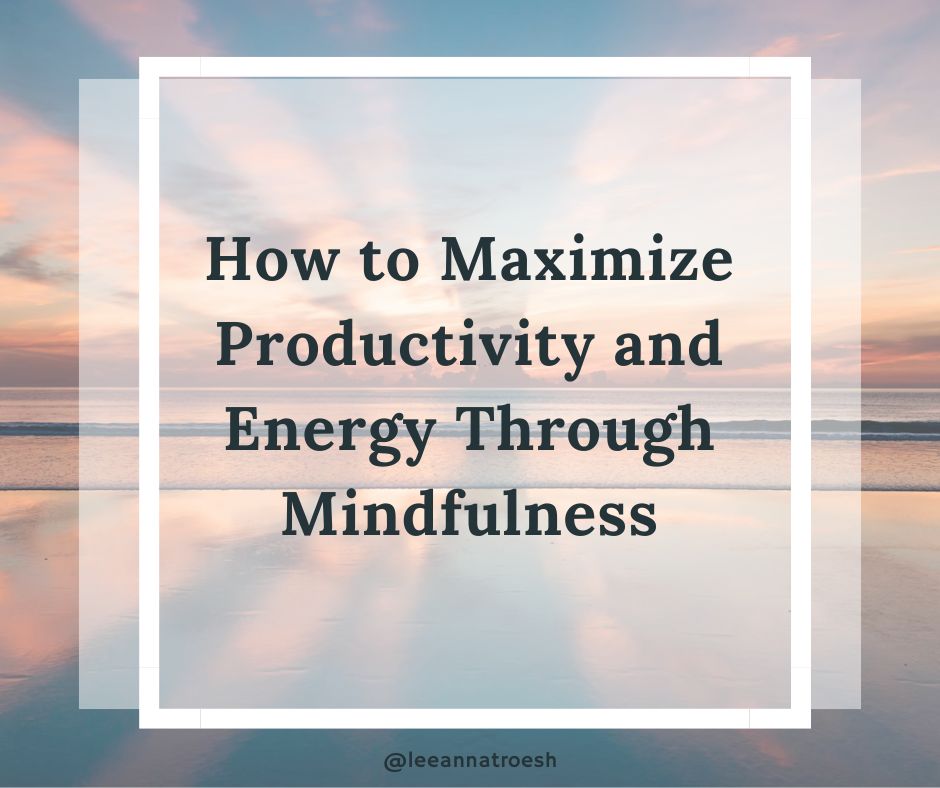In today’s fast-paced world, we compromise productivity through brain fog, scattered thoughts, emotional turmoil, and the sheer volume of daily tasks. If we want to create meaningful changes in our lives, it’s essential to identify where we are leaking energy, time, and productivity.
Understanding that everything, including our thoughts, is made of energy helps us see the significant impact our thinking has on our emotions and overall well-being.
Our emotions have a direct chemical link to our immune system through our central nervous system. By understanding the chemistry of our body, thoughts, and emotions, we can use tools and develop skills to harness this energy, ultimately producing higher-quality work in less time.
One such powerful tool is mindfulness, particularly proper meditation. Calming our thoughts can calm our energy and produce better-quality work. We’ll explore how mindfulness can significantly enhance productivity and workflow abundance here.
Understanding Brain Waves and the Nervous System
Our brain operates at different frequencies depending on our state of consciousness. These frequencies, known as brain waves, are crucial to our productivity. For instance, if we remain at a high beta wave activity for a prolonged period, it results in anxiety, high arousal, an inability to relax, poor cognition, memory issues, problem-solving, and adds to stress.
Understanding this connection is key to improving our productivity and well-being.
- Beta Waves: Associated with active thinking, problem-solving, and focus. High beta wave activity links to stress and anxiety.
- Alpha Waves: Present during relaxed yet alert states. These waves are ideal for calm focus and creativity.
- Theta Waves: Occur during deep relaxation and meditation and are linked to intuition and memory.
- Delta Waves: Dominant during deep, restorative sleep.
When we experience stress, our body releases cortisol, a hormone that triggers the ‘fight or flight’ response. Chronic stress keeps our brain in a high beta state, leading to burnout and reduced productivity. Mindfulness practices help shift our brain waves from high beta to alpha and theta states, promoting relaxation, focus, and creativity, providing much-needed relief from stress.
How do we get out of a High Beta brain wave by paying attention to our breathing? When we inhale and exhale according to a rhythm or counting numbers, we create focused attention and help to regulate the nervous system.
When we participate in rhythmic breathing, the brain responds differently. Research has shown that breathing affects different brain regions depending on our task. Therefore, we can calm and engage the prefrontal cortex and midbrain, which helps focus, concentration, and decision-making, allowing us to be more productive and effective at work.
Evidence-Based Mindfulness Practices
Research has shown that mindfulness practices can effectively reduce stress and enhance productivity. Some proven mindfulness practices include:
1. Meditation
- Guided Meditation: Follow a guided session to focus your mind and achieve relaxation.
- Mindful Breathing: Practice deep breathing exercises to calm the nervous system.
- Body Scan Meditation: Focus on different body parts, releasing tension and promoting relaxation.
2. Mindful Movement
- Yoga: Incorporates physical postures, breath control, and meditation to reduce stress and increase flexibility.
- Tai Chi: A gentle form of martial arts that focuses on slow, deliberate movements and deep breathing.
3. Mindfulness in Daily Activities
- Mindful Eating involves Paying attention to the taste, texture, and smell of food, which promotes better digestion and appreciation.
- Mindful Walking: Stroll, focusing on the sensation of your feet touching the ground and your surroundings.
- Gratitude Journaling: Write down things you are grateful for to shift your focus from stress to positivity.
Tools to Make Minor Key Improvements
Incorporating mindfulness practices into your daily routine doesn’t require a complete overhaul of your schedule. Here are some simple tools to help you make minor yet impactful improvements, reassuring you that it’s not as complicated as it may seem.
1. Mindfulness Apps
- Headspace: Offers guided meditations and mindfulness exercises.
- Calm: Provides meditation sessions, sleep stories, and breathing exercises.
- Insight Timer: Features an extensive library of guided meditations and talks by mindfulness experts.
2. Timers and Reminders
- Pomodoro Technique: Work in focused intervals (usually 25 minutes), followed by short breaks. Use a timer to manage these intervals.
- Mindfulness Reminders: Set reminders on your phone or computer to take short mindfulness breaks throughout the day.
3. Breathing Exercises
- Box Breathing: Inhale for 4 seconds, hold, exhale, and hold for 4 seconds. Repeat several times to calm your mind.
- 4-7-8 Breathing: Inhale for 4 seconds, hold for 7 seconds, and exhale for 8 seconds. This technique helps reduce anxiety and promote relaxation.
Conclusion
Understanding the chemistry of brain waves and the nervous system and incorporating evidence-based mindfulness practices can significantly enhance our productivity and workflow abundance. These practices help us manage stress, maintain focus, and foster creativity, leading to a more balanced and fulfilling life bringing a sense of contentment.
Implementing simple tools such as mindfulness apps, timers, and breathing exercises can make incorporating mindfulness into your daily routine easier. By doing so, you’ll find yourself producing higher-quality work in less time while also improving your overall well-being. Remember, the key to productivity is not just working harder but working smarter by harnessing the power of mindfulness.


